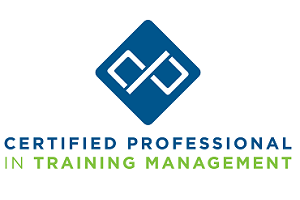Editor’s note: As we ended a difficult and unique year and entered a new one, the Training Industry editorial team asked learning leaders to write in with their reflections on 2020 and predictions for 2021. This series, “What’s Changed and What Hasn’t?: Taking Stock of 2020 and Planning for 2021,” is the result. Plus, don’t miss our infographic, “5 Tips for Turning 2020 Disarray Into 2021 Direction: Insights From Learning Leaders,” which shares insights from the series.
Given the unprecedented challenges the COVID-19 pandemic has brought to the workplace, many people are hoping to return to a “normal,” face-to-face culture in 2021. And while there are drawbacks to our new workplace norms, there are many upsides, too, especially when it comes to innovation and organizational effectiveness. In fact, the trends that emerged last year will dramatically increase individual impact at every organizational level.
Rest assured that some things will return to normal. In-person experiences are irreplaceable, essential for building trust and a strong sense of community, as well as for fostering key relationships and reading body language during a high-stakes conversation. Even so, some of the changes that emerged last year, often thought of as temporary disadvantages, are innovations that are here to stay. For instance, organizations can accomplish a lot through virtual meetings. At a minimum, they can help employees leverage their time through preparing, discussing and following up with whatever objectives they have for in-person events.
The Acceleration of Online Learning
Consider also the acceleration of online learning in 2020 due to the evaporation of face-to-face training. It seems like every training vendor rolled out some type of virtual format. Whether they’re fully online, self-paced, asynchronous formats, or “live,” facilitated, synchronous formats, these technologies have improved dramatically in 2020 — and they’re working. Why return completely to the old approach?
The optimistic truth is that most online, self-paced programs are significantly more condensed than their in-person cousins. Trainers are compelled to put out their best, most engaging work to help participants realize their learning objectives. Instructors leading virtual programs with live facilitation learned how to manage breakout groups, online chat and phone conversations, with or without producers to help manage the internet connection. Those skills shouldn’t be unlearned.
A Hybrid Approach
Instead of planning a return to the old way, we should employ hybrid thinking. What knowledge should we preserve from 2020 and use to improve and build upon in-person events?
To start with, why not ask a team that might normally participated in a day of training at an in-person event to go through a tailored online training program prior to their arrival at the event? That way, they can use their in-person time to focus on case studies, active skill development (role-plays, etc.) and group discussion to drive deeper understanding and implementation for real impact. At a minimum, teams could intersperse selected segments of those online, self-paced training programs among live in-person or virtual events. Then, they could follow in-person events with virtual meetings to reinforce what participants learned and drive home the overriding initiatives that predicated the training.
Several Silicon Valley companies are taking just that approach. They converted full-day face-to-face programs into a two-hour self-paced online program, delivered in four half-hour segments, each followed by a 30-minute live virtual meeting to work through cases, discuss application options and address questions.
Will these companies take a different approach after the pandemic? Perhaps, but not necessarily. After all, this hybrid approach enables teams to participate in training from diverse locations, with little disruption to their work.
The Opportunity in 2021
We have an opportunity to move further along the continuum from learning to doing, ensuring a transfer of learning toward impactful application on the job. With less of a need to wait for scheduling to allow for in-person training, we can do more to ensure application and immediate access to learning.
So, what’s changed for 2021? It’s a mix, but think hybrid — use the best of available modalities, in whichever configuration works best for the people involved and the objectives most critical for success. Training professionals can use their skills more creatively than ever before. Think of yourself as an artist, with an expanded pallet to draw from moving into 2021 and beyond.


